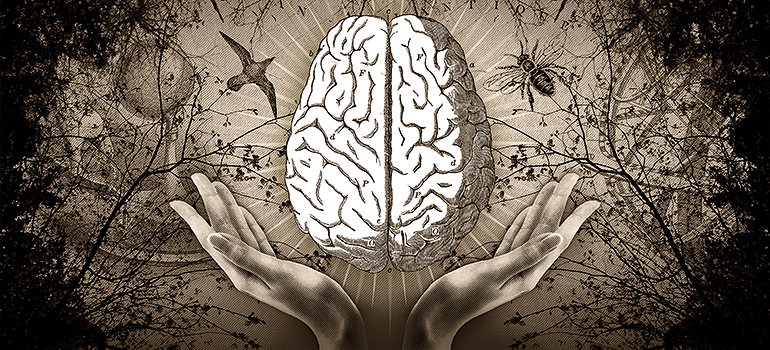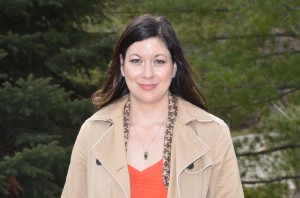
Natasha Rebry, first interdisciplinary PhD from the Faculty of Creative and Critical Studies, finds Victorian era’s hidden connections
Poking around old manuscripts and researching dusty archives helped Natasha Rebry unravel the mysteries of the Victorian era. She sought new insights by blending her study of Gothic literature with the history of modern psychology for her PhD dissertation.
Scholars have long linked Victorian culture and Gothic literature, says Rebry. But what interested her was a growing societal fascination at the time for testing the boundaries of reality—spirits, séances, mediums, and psychic curiosities. Victorian-era scientists quietly examined these to understand the capacities of the human mind, while at the same time denouncing spiritualism as charlatanism.
“Everyone thought that scientific discovery, the study of spirits and what has evolved into modern psychology were somehow related,” says Rebry, “Especially in the late 19th century, both science and literature were exploring that gray area at the same time.”
“I’m really looking at those phenomena that suggest there is depth to the psyche, that what is on the surface is really only a small part of the true story.”
Rebry expects to be the first interdisciplinary PhD graduate from the Faculty of Creative and Critical Studies at UBC’s Okanagan campus. She studied Gothic and Victorian influences with the Dept. of Critical Studies and pursued the history of psychology through the Irving K. Barber School of Arts and Sciences.
She initially investigated the literary trend of multiple personalities, hypnotism and hysteria such as found in Robert Louis Stephenson’s Dr. Jekyll and Mr. Hyde. That Victorian boffins culled ideas from Stephenson’s work lent credence to the notion that literature not only disseminates information, but contributes to the discussion.
Rebry’s research received a major boost when she obtained a research grant from the Bakken Museum and library in Minneapolis to examine its extensive collection of original Gothic documents and books.
“There is this very clear connection between science and literature, things far removed from the humanities and cultural studies,” says Rebry. “I’m really looking at those phenomena that suggest there is depth to the psyche, that what is on the surface is really only a small part of the true story.”
Jodey Castricano, a professor during Rebry’s undergraduate days at Wilfrid Laurier University, encouraged her to pursue graduate studies. When Castricano joined UBC’s Okanagan campus in the Dept. of Critical Studies, Rebry contacted her to do a PhD.
“Natasha has a passion for the world of ideas and the ability to think them through and make them her own. It takes a scholar with that flexibility of mind to discover the affinities and make those connections,” says Castricano.
Rebry is considering post-doctoral study but says the classroom is where her ultimate future lies. She plans to be among those leading a new era of academic collaboration.
“The trend in the humanities moving towards interdisciplinarity is really exciting,” says Rebry. “Every kind of idea draws upon a matrix, it’s not just a linear development. It tends to look a little more like a family tree with lots of branches.”
Wisdom Tettey, Dean of the Faculty of Creative and Critical Studies, says Rebry has blazed the trail for current and future doctoral students, her work epitomizing the faculty’s approach to exploring and understanding the complex dynamics of our world.

